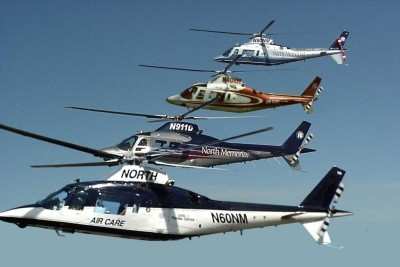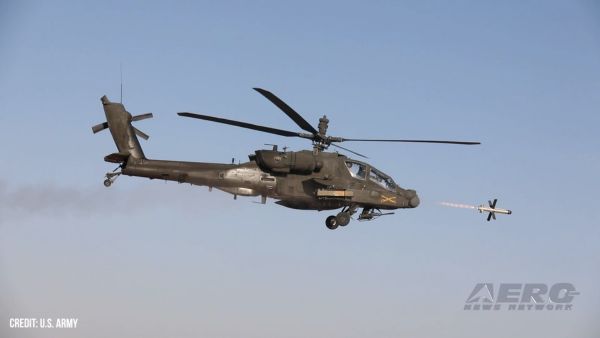Fri, Oct 02, 2020
AD 2020-20-02 Requires Inspecting Each Fire Extinguisher Bottle For A Crack
The FAA is adopting a new airworthiness directive (AD) for Leonardo S.p.a. (Leonardo) Model A109E, A109S, and AW109SP helicopters. This AD requires inspecting each fire extinguisher bottle for a crack. This AD was prompted by a report of a cracked fire extinguisher bottle. The actions of this AD are intended to address an unsafe condition on these products. This AD is effective November 3, 2020.

Supplementary Information: The FAA issued a notice of proposed rulemaking (NPRM) to amend 14 CFR part 39 by adding an AD that would apply to Leonardo Model A109E, A109S, and AW109SP helicopters with a fire extinguisher bottle part number (P/N) 27300-1 installed. The NPRM published in the Federal Register on April 23, 2020 (85 FR 22686). The NPRM proposed to require repetitively inspecting the weld beads of each fire extinguisher bottle P/N 27300-1 assembly for a crack. If there is a crack, the NPRM proposed to require replacing the fire extinguisher bottle before further flight. The NPRM also proposed to prohibit the installation of a fire extinguisher bottle P/N 27300-1 on any helicopter unless it has met the requirements of this AD. The proposed requirements were intended to detect a crack on a fire extinguisher bottle bypass outlet assembly, which could result in failure of the fire extinguishing system in the event of a fire in the engine area and subsequent loss of control of the helicopter.
The NPRM was prompted by EASA AD No. 2016-0261R1, dated February 13, 2020, issued by EASA, which is the Technical Agent for the Member States of the European Union, to correct an unsafe condition for Leonardo Model A109LUH, A109E, A109S, and AW109SP helicopters. EASA advises that a fractured bypass outlet assembly (assembly), which is a component of fire extinguishing bottle P/N 27300-1, was found during maintenance on a Model AW109SP helicopter.
EASA states that this condition, if not detected and corrected, could affect the capability of the fire extinguishing system to extinguish a fire in the engine area, resulting in damage to the helicopter and injury to any occupants. To address this unsafe condition, the EASA AD requires repetitive inspections of the assembly, and if there is a crack, replacing the fire extinguisher bottle. Due to similarity of design, EASA advises other helicopter models may be subject to the same unsafe condition.
More News
Check out https://affordableflying.net/attend/ Right Away and Get YOUR Tickets To the Affordable Flying Expo! OK.... with a little over a month to go, it’s time to get seriou>[...]
"Amelia made it almost three-quarters of the way around the world before she suddenly, and without notice, vanished—never to be seen again. Her disappearance, almost 90 years>[...]
Aero Linx: Cessna 150-152 Club The Cessna 150-152 Club has been the go-to place for information about the care and operation of the World’s Most Popular Two-Place Airplane si>[...]
Hover Taxi Used to describe a helicopter/VTOL aircraft movement conducted above the surface and in ground effect at airspeeds less than approximately 20 knots. The actual height ma>[...]
Also: Purdue In Space?, 4 SpecOps Lost In Helo Crash, Solid-Fuel Ramjet, Ultra-High Airspace Over FL The US Army recently confirmed its plans to thin out its active duty aviation r>[...]
 Ticket Sales NOW OPEN for 2025 Affordable Flying Expo!
Ticket Sales NOW OPEN for 2025 Affordable Flying Expo! Aero-News: Quote of the Day (09.29.25)
Aero-News: Quote of the Day (09.29.25) ANN's Daily Aero-Linx (09.29.25)
ANN's Daily Aero-Linx (09.29.25) ANN's Daily Aero-Term (09.29.25): Hover Taxi
ANN's Daily Aero-Term (09.29.25): Hover Taxi Airborne 09.26.25: Army Cuts AV-Ranks, 2025 ATC Hiring, AF Next-Gen Fighter
Airborne 09.26.25: Army Cuts AV-Ranks, 2025 ATC Hiring, AF Next-Gen Fighter



